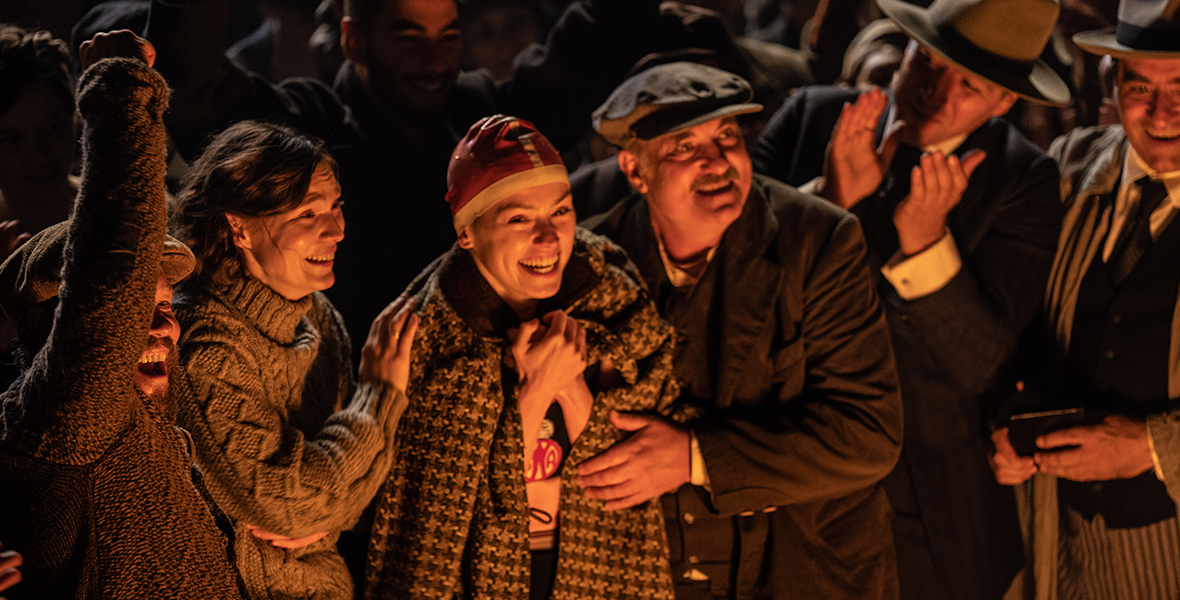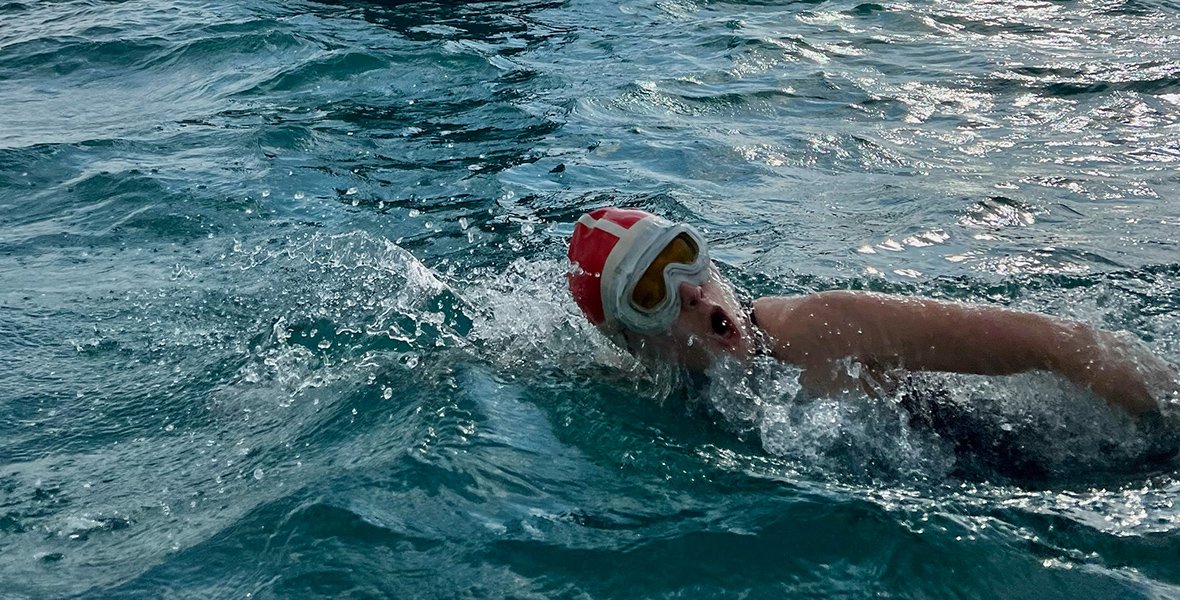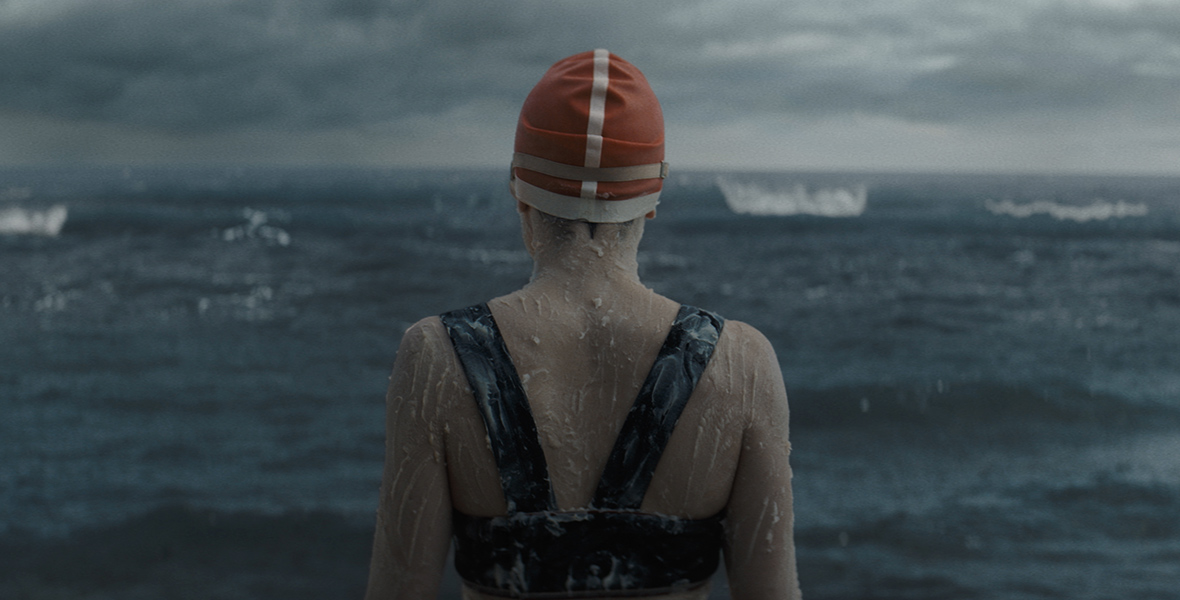By Alison Stateman
It was a movie nearly a century—and, for the creative team, close to a decade—in the making. Young Woman and the Sea, starring Daisy Ridley, tells the extraordinary true story of Trudy Ederle, the first woman to successfully swim the English Channel in 1926… not to mention doing so faster than any of the five men who came before her.
The film, which enjoyed a limited engagement in theaters on May 31, will debut on Disney+ this Friday, July 19. To mark the occasion, Ridley, along with director Joachim Rønning and producer Jerry Bruckheimer, shared what it took to bring Trudy’s remarkable story to the screen at a recent press conference.
The journey began when writer Jeff Nathanson, seeking empowering stories to share with his two daughters, stumbled across Glenn Stout’s book Young Woman and the Sea: How Trudy Ederle Conquered the English Channel and Inspired the World in 2016—seven years after its 2009 publication. Nathanson, who worked with Bruckheimer in the past—including on The Pirates of the Caribbean: Dead Men Tell No Tales, shared the story with the producer, who was immediately sold.
“We fell in love with it and got Joachim involved and Daisy involved. But it took us about nine years between [Nathanson] writing the screenplay and finally [getting] the movie made. It was a long journey,” Bruckheimer says.

Ridley, who is also an executive producer of the film and familiar with playing a strong female lead—given her star-making turn as Rey from the Star Wars films—says Trudy is “the most joyful character I’ve played. She’s determined. Initially she doesn’t see the barriers that everyone else is aware of. She’s just on her journey. But really, for me, the whole was greater than just playing her, because I saw this family who are wonderful and lovable and who you want to spend time with.”
Born to immigrant parents in New York City in 1905, Trudy overcame incredible odds to achieve her remarkable feat in part through the unwavering support of her older sister Meg and dedicated trainers—battling not only punishing cold waters, jelly fish, and physical fatigue but established social norms.
“I was shocked that I didn’t know [Trudy’s] story because it was such a worldwide event when it happened a hundred years ago,” says Rønning. “In many ways it changed women’s sports forever.”
He says he and the team felt an obligation to retell Trudy’s story and rediscover her for the world. “As much as it is Trudy’s story, it’s also her family story. I wanted to tell the story through the eyes of Trudy’s family because they were there with her all the way,” he adds. “They also represented different parts of the society of the time, with the suppression, the skeptics, the love.”
This included Trudy’s mother, Gertrude (Jeanette Hain), who paved the way for Trudy and Meg to learn to swim and later, for Trudy compete in the Olympics, as well as her butcher father, who was initially reluctant to let her do so.
Focusing not only on the grand achievement but also grounding the story in the intimate helped create a heroine viewers could better relate to, Rønning says. “When you make a movie about someone who’s so determined, that’s willing to risk her own life to do something, it can be a little challenging to identify with her.”

Making it Real
Of course, it’s Trudy’s determination to do the seemingly impossible that is at the heart of the story. To capture the incredible physical barriers facing Trudy, the team opted to film swimming sequences in the Black Sea in Bulgaria—which created its own challenges, and rewards.
So determined to play Trudy was Ridley that, after being informed of the intent to film sequences in open water, she admits she lied on her “CV” (or resume, for American readers) about her swimming experience.
“I was like, ‘I’m great at swimming, I love open water,’ because, of course, I wanted to do this role. And then as things got closer, I thought, ‘Hmm, how is this going to go,” says Ridley with a laugh.
The actress more than rose to the occasion—training with coaches including Olympic silver medal champion Siobhan Marie O’Connor for three months prior to filming.
“It felt honestly impossible at the beginning. There’s so much to learn,” says Ridley. “My swimming would be getting better as we were filming, but it was all in the pool. Then when we got to open water, it was just an overwhelm of everything, of the current and the cold; there was a lot to contend with, and then just keeping in focus of the camera. When you’re swimming like that, all you hear is your own breath. It gave me a momentary understanding of what Trudy really did.”
Says Bruckheimer, “You could feel her in that really cold water, in the wind, and that is Joachim’s style. He likes to bring everything that is actually real on camera and make the audience feel it. I think you really do feel it.”
Adds Rønning, “Everything on the open water will technically be difficult. But for me it’s always going to be the heart of the story. And the heart of the story is carried by Daisy Ridley….I couldn’t have asked for a better film partner.”


